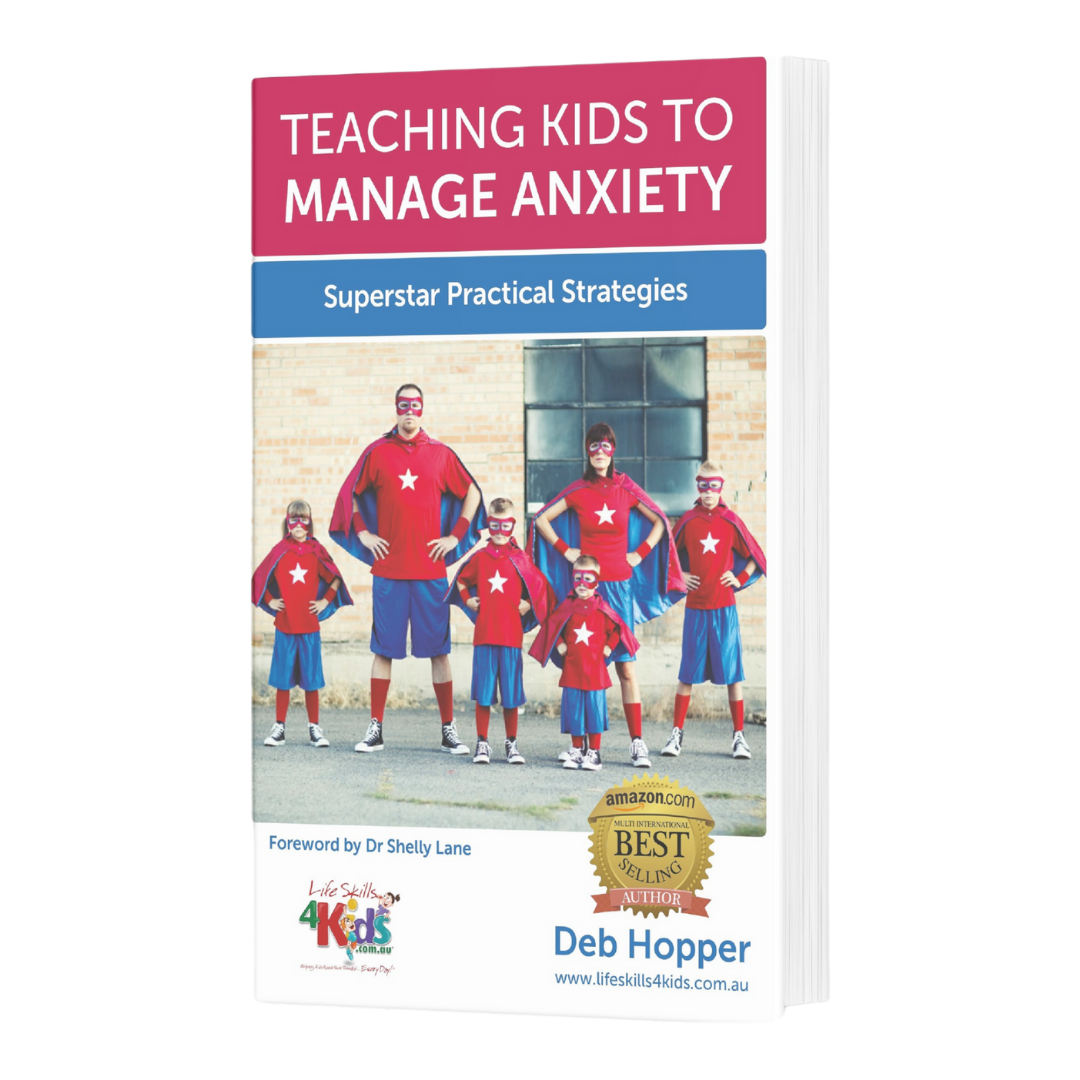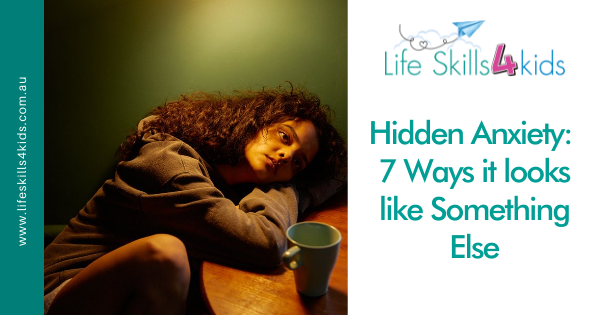Hidden anxiety among children is surprisingly high, undoubtedly because it often masquerades as something else. And without understanding what they’re dealing with, the adults in a child’s life are often not equipped to handle it in the best way for the child.
Anxiety arises when the amygdala, a small organ in the centre of the brain, sends out signals chemical signals intended to give a person extra speed or strength in times of danger. It puts the whole body on high alert as it goes into “flight, fight, or freeze” mode whenever it perceives a threat.
But anxiety doesn’t often wave a banner and announce its presence, especially in children. And unless a parent or carer knows what to look for, what is essentially a cry for help may go unrecognised.
So, what does hidden anxiety look like? (It’s important to remember that each child is different and anxiety patterns are not uniform).
Explosive outbursts
These occur seemingly out of the blue and are even more surprising because they usually happen to a normally calm child. Renowned social scientist Brene Brown terms it ‘chandeliering’ because the person explodes so profoundly that they go through the chandelier!
Explosive outbursts or flying off the handle occurs when a child has been pushing down their feelings of anxiety over time until one day, it all comes rushing out. It might be triggered by something seemingly insignificant, but the underlying cause is suppressed anxiety that suddenly has to escape.
Anger & defiance
Anger and defiance are close relatives of the explosive outburst. Anger is also caused by the amygdala releasing chemicals intended to help us survive a threatening experience. Anger is a misplaced attempt to protect ourselves from harm.
Anger can take various forms, from sulky or sullen teen behaviour to tantrums, but its primary purpose is to protect us from danger.
Defiance is related to anger, but its purpose has a subtle difference. When anxiety is making a child feel helpless or out of control, sometimes they will try to gain some control in another area. Therefore, when a child is feeling anxious about having to go to school and feels helpless to control the situation, they might try to gain control in another area. This shows up as defiance about something unrelated, such as not wanting to wear certain clothes or refusing to have their hair done.
Sleeping difficulties
Anxiety and poor sleep create a cycle that’s hard to break. Anxious thoughts keep kids awake, while sleep deprivation can increase anxiety. Kids can stay awake worrying about oversleeping or being tired at school, which further contributes to the cycle.
Poor focus
Sometimes children become so lost in their worrying thoughts that they don’t pay adequate attention to the world around them. Sometimes adults speak and the child doesn’t appear to hear, but it doesn’t mean they are deliberately ignoring a parent or teacher. However, if the adult doesn’t
recognise the real cause of the child’s inattention, they may respond inappropriately or misinterpret the child’s actions.
Negative thoughts
Kids with anxiety tend to experience more negative thoughts than positive ones. It’s easier to go with negative thoughts and attitudes, and it can appear that the child is battling the blues all the time.
As adults, we can recognize this as anxiety, and help kids develop the skills to pinpoint negative self-talk and turn it around to be positive. This is a learned skill, and many kids will not pick up this skill without help.
Avoidance tactics
Most of us know what it feels like to want to avoid a task or situation because we simply don’t want to do it or participate, but for kids with anxiety, avoidance can become a major issue. Avoidance tactics can include taking action to avoid a task or situation, or not doing what they need to.
This often creates a cycle as the child spends time and energy avoiding the task or situation, only to still have to face it, which creates more anxiety, especially if they are now behind on a job, chore, or homework.
Overthinking
Overthinking and overplanning are close relations of defiance, as both have a need for control at their core.
But instead of trying to gain some control over a situation through defiance, an overthinking child will try to plan for every possible eventuality. This can sound like endless questions about what will happen, who might be there, and when a parent is going to pick them up.
Trying to prepare for every possibility is the child’s way of trying to take control over a situation when in reality, there is very little they can do to control it.
Recognise the problem, meet the need
By recognising anxiety as the hidden cause of the behaviour, parents, carers and teachers can take action to help a child deal with anxiety. The unwanted behaviour is just a symptom of a deeper problem.
Teaching Kids to Manage Anxiety
Kids today are growing up in a fast-paced world where information and opportunity overload can be overwhelming.
Based on many years of clinical experience as an Occupational Therapist, Deb Hopper has been using her Just Right Kids® Model to teach children to communicate and manage their stress and anxiety by:
- Identifying their “body speed”,
- Understanding their stress triggers, and
- Implementing simple strategies to reduce anxiety and stress.
“This is quite simply the best, most comprehensive and practical bookI have ever read to help teach children – and many grownups – how to manage anxiety. It is written in an easy to read way with lots of fabulous graphics. This brilliant book needs to be in every home, every school and every library.” — Parenting author and educator Maggie Dent
Explore
- How the body reacts to anxiety and impacts on our ability to think and get an action plan together
- How to teach your children to identify when their body and mind is anxious, and how to tell you
- Sensory overload and how this can push children into being anxious
- Strategies to reduce screen time that you can start today (because this will help reduce anxiety in your house and make life more peaceful


